Ski Buyers Guide
Skis
There are hundreds of different skis on the market, all designed with a certain skier in mind. Buying a pair can get a little complicated and it’s often easy to get confused with technical jargon. Here at
Firstly we’ll run through the different things you’ll have to consider. You’ll need to decide what type of ski you want and you’re ability level. Then you’ll need to consider the shape of the ski, width under foot and the flex rating.
Every ski we stock has been extensively tested. We try to provide as much information to help you make the right choice. Please read the descriptions carefully and look out for our ski tester comments. Try using our ski selector, a handy guide to narrow down the range to a few different options.
You can check out our full range of skis here.
GENDER
Firstly, are you female? A simple, but important question! Women have a different body build to men, with a lower centre of gravity; causing them to lean back more when they ski. They are also lighter than men. This is all taken into account when designing a
SKI TYPE
Take your time, and read all the categories below. Try to define one or two types of ski that really reflects where & how you like to ski. Piste, Powder, Park or wherever you love to spend your time.
ON PISTE
As the name suggests, if you spend most of your time on piste then this is the ski to go for. In general piste skis are narrower underfoot with more side-cut so they turn and grip the snow quickly and precisely. Look at the turn radius of each ski; most piste skis will have a relatively small turn radius allowing short sharp turns. However, if you venture into fresh snow or dabble in a little
ALL MOUNTAIN
A very popular category, ideal for skiing a variety of terrain. Simply put, these are wider, fatter piste skis. They have the shape to offer excellent grip and response on the piste, with extra float for days when the snow is falling. Keep an eye on the width underfoot, fatter skis means more fun in the powder but slightly less manoeuvrability on the piste.
FREERIDE
For those that want to access the whole mountain and have a passion for skiing powder – Waist deep in the morning, then
BIG MOUNTAIN
Super fat skis for the ultimate powder experience! If you spend most your time
FREESTYLE
Twin tip skis that are happy whichever way you point them! Freestyle is a big growth area in the ski world and has
RACE
For advanced and expert skiers who want extreme piste performance. If you’re a fast aggressive skier and stick to the piste, then this type of ski will be perfect. A
ABILITY LEVEL
Now there’s no need to go showing off here, buying a pair skis to suit your ability is very important. On the other hand, be realistic, don’t talk yourself down, you don’t want to have to upgrade after only a couple of weeks on the snow. If you’re unsure then please don’t hesitate to call one of our experts.
LEVEL 1 – JUST STARTING OUT
Skiing is new to you; you may have had some lessons on a UK dry or snow slope, or maybe 1 or 2 weeks on snow.
A ski with a softer flex rating will be ideal, usually a piste ski or freestyle ski to get you started. This is the first step up from a rental ski, offering far more enjoyment on the snow!
LEVEL 2-4 – INTERMEDIATE
2 – You’re still using a snowplough to stop & have discovered how to manoeuvre to the left & right. Sticking mainly to the nursery slopes at low speeds.
3 – You’ve started to link snowplough turns & are happy cruising down shallow terrain, exploring blue runs.
4 – You’ve mastered the basics & are confident on less challenging slopes. On more demanding slopes you’re cautious & often still use a snowplough to slow down.
For levels 2-4 a ski with a soft to mid flex rating will be suitable, offering easy turn initiation with more control at modest speeds. This will help you build on your technique & style. You’ll probably want to go for a piste ski, but don’t rule out a freestyle, all mountain or freeride ski with a softer flex pattern.
LEVEL 5-7 – ADVANCED
5 – You are now starting to develop your technique, occasionally using the snowplough for easy turn initiation. You’re happy skiing on easy red runs & turn up the pace on mellow blues.
6 – You’re perfecting your parallel turns on less challenging terrain, gaining in confidence on reds. You manage to get down most black runs.
7 – You are confidently linking parallel turns on most slopes with great technique. You can get down steep & icy blacks, but style goes out the window! You may even have attempted some slope side powder.
For levels 5-7 a ski with a mid to firm flex rating will be suitable, offering grip & control at a variety of speeds. This will help you maintain a smooth & fluid technique on all types of runs. You may want to consider an all mountain, freestyle or freeride ski. These will help if you’re skiing on piste whilst it’s snowing.
LEVEL 8-9 – EXPERT
8 – You’re happy to ski on any run in most conditions, maybe venturing into the powder without much worry. Skiing at high speed is not a problem & you have mastered carving turns.
9 – You’ll tackle anything that the mountain has to offer, steep icy blacks,
For levels 8-9 a ski with a firm flex rating will be suitable, giving you grip & control at high speeds. This allows you to burn down the piste without having to worry that the ski is going to feel twitchy & unpredictable. You should know what type of skiing you’re into, or maybe you’re up for a new challenge. You’re probably looking for an all mountain, freestyle or freeride ski; if you love the powder consider a big mountain ski.
LEVEL 10 – RACE
10 – Congratulations, you are a pro! You’re probably a qualified instructor or regularly participate in competitions.
You’re an expert skier who is looking for a set of stiff aggressive skis.
You’ll want to pick a race ski to give you the ultimate piste performance. Loads of grip at top speeds!
SKI SHAPE AND FLEX
SIDE CUT
The shape of a ski is shown by the
WIDTH
The width of a ski underfoot is shown as the middle number of the sidecut. Using the example above the width is 68mm. This measurement is an important indicator of how the ski will behave in powder & on
TURN RADIUS
The turn radius is an indication of how quickly the ski turns. The shorter the turn radius the sharper the ski will turn on
CAMBER PROFILE
The camber profile is the shape a ski has when viewed side on. Different types of camber change how the skis behave, for example a traditional camber profile forces your weight out along the skis and gives excellent edge hold and grip. Where as a rocker profile gives more float in deeper snow and a looser, catch free, feel on harder snow and park features.
FLEX
The
As a rule of thumb, a soft ski is great for a beginner & a super stiff ski is suitable for an expert. There are exceptions to this, if you want a freestyle ski for jibbing & buttering then you’ll want plenty of flex, also some advanced big mountain skis will be super soft for riding in deep snow. But as a general guide, stiffer skis will give stability at speed.
SKI SIZE
Before we move onto the size of ski you require, it is important that you know the type of ski. Each type of ski is specific & you’ll need to go for a certain length depending on the ski. For example, if you ski a race slalom ski in a 165cm, you may well need a 178cm freeride ski or a 185cm big mountain ski.
If you’ve followed this guide from the top,
Use this visual guide as an indication for the length of ski you need.
Still Stuck?
Then why not contact one of our experts. Call on 01202 499155 ext 2 or email us. By providing us with some basic information we can help you make the right choice. We’ll need to know your weight, height, skiing ability & a description of the type of skiing you enjoy. Let us know which skis you’re interested in & we’ll help you decide what to go for & what size.
To check out our full range of skis, please click here.



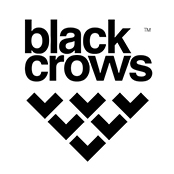

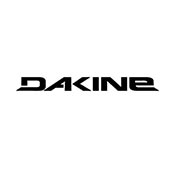
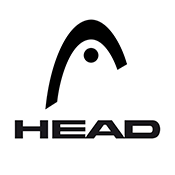


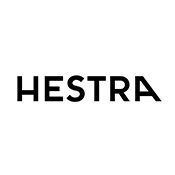

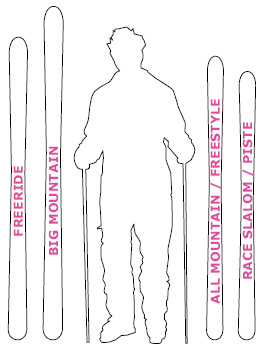



 OK, Got it.
OK, Got it.